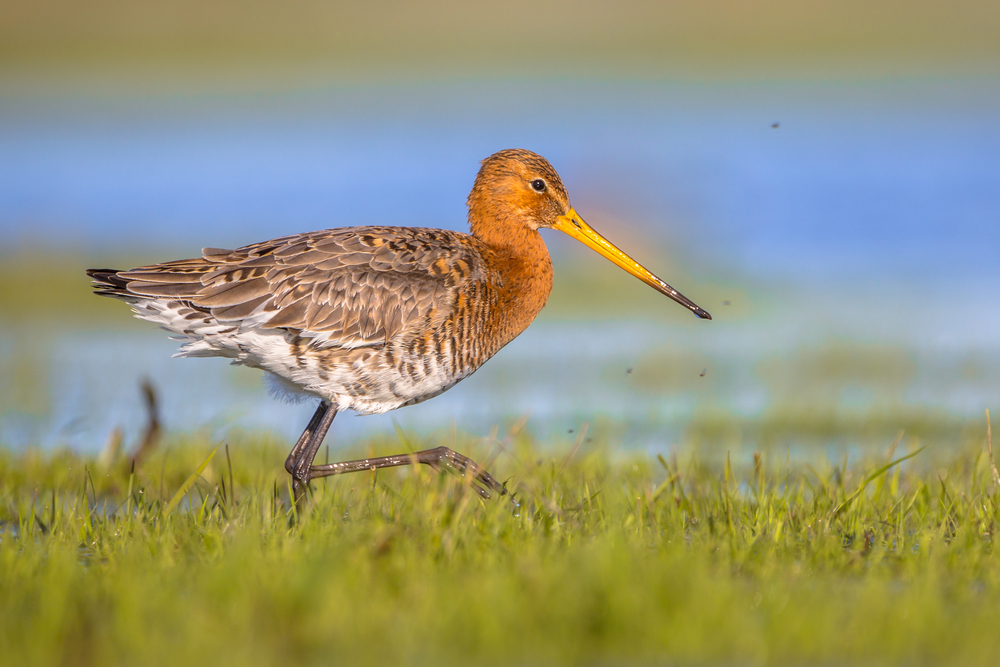The current agricultural nature management does not solve the decline in bird populations on Dutch meadows and fields. At best, it slows the decline in numbers. This is shown by a study conducted by WUR and SOVON.
In the report, lead author Tim Visser and his colleagues list the ecological effects of the current system of subsidies for Agricultural Nature and Landscape management (Dutch acronym ANLb). This system was introduced in 2016 and focuses primarily on field and meadow birds, whose populations have been steadily declining for decades.
Farmers try to reverse this trend voluntarily and are compensated for their efforts. Measures include later mowing, sowing flower-rich borders and increasing water levels. Visser’s study shows these measures have some effect but nowhere near enough. ‘The results are twofold. They are both confronting and hope-inspiring. Bird population decline three times as fast in unmanaged areas as in managed areas. If we continue along this path, the best possible outcome is to slow the decline. That is not a sustainable solution.’
And the positive news?
‘The fact that we are able to alter the trend is hope-inspiring. The good news is that there is a positive relationship between agricultural nature management and trends among breeding birds in the area. That is the most concrete evidence that agricultural nature management can reverse the trend.
Just 2.5 per cent of the total agricultural land is under strict management. Is this just a drop in the ocean?
It is unrealistic to expect to influence national trends in bird populations with such limited agricultural nature management. At a local level, farmer collectives have succeeded in reversing the downward trend among breeding birds. However, the numbers are too low to have a significant impact on a national scale. The influence of local successes on the national trend is too limited.’
Is the location of the stewarded areas relevant?
‘Yes. Our results show that it is important that such efforts are clustered. In areas where managed grounds are clustered, local trends among meadow and field birds can be successfully stabilised or even reversed. The greatest challenge is to scale up the efforts from locally stabilising trends to reversing them at a national level.’
How large must such a local area be?
‘A crucial part of our investigation is the link we found between the percentage of farmlands being managed according to the ANLb and trends among bird populations. To benefit meadow birds, an area of approximately 62 hectares must have at least half of its area fall beneath strict management for a decent chance at recovery. Impactful management must be implemented at a solid scale. We are quite certain of what management is needed for meadow birds. The challenge is how to make this happen within the farmers’ economic parameters.’
How much agricultural nature management is required to reverse the national trend?
‘I can’t say, but it will have to be much more than now. In areas without agricultural nature management, the decline in bird populations is steep. That decline must be compensated in areas where management is applied. Choices will have to be made. Will strict management apply over a limited area focusing on recovery and growth, or just enough management over a larger area, focusing on maintaining a stable population? The cabinet will invest an additional 500 million euros in agricultural nature management. Based on our study, I would recommend clustering strict management rather than spreading areas across the country like sprinkles.’
Can agricultural nature management play a decisive role?
‘I am positive over the fact that there is a positive link between agricultural nature management and population grown, particularly among meadow birds. The fact that the decline in species continues at a national level is concerning. Quite some measures are required, and soon too, if we aim to reverse the trend. Efforts are currently underway to achieve large and robust areas for the black-tailed godwit. A similar plan should be made for field birds as their population is still rapidly declining.

 Black-tailed godwit. Photo Shutterstock
Black-tailed godwit. Photo Shutterstock